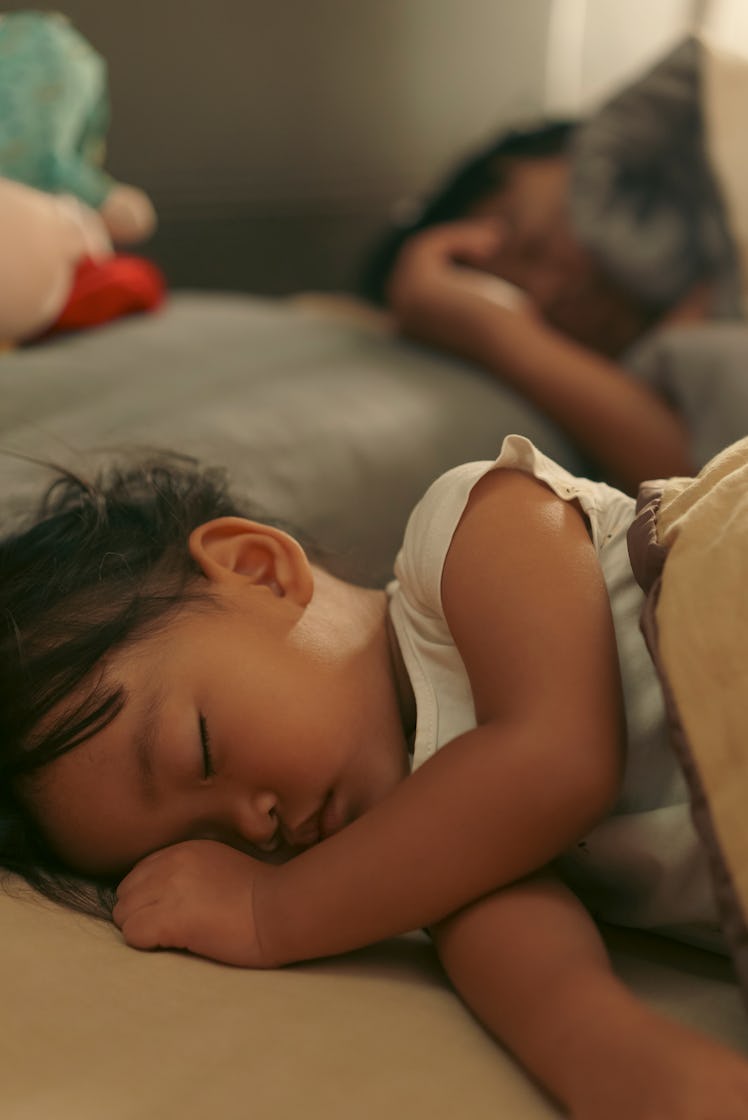Yes, Babies Can Be Depressed. Here Are The Signs To Look Out For
New research shows that pediatric depression poses are clear danger to newborns

Babies may not have much to be sad about — disappointment requires expectation — but that doesn’t mean they’re happy all the time. New research shows that infants are neurologically capable of experiencing sadness, which can even morph into pediatric depression. The difficulty this presents is that infant sadness does not resemble adult sadness, has different triggers, and can be difficult to diagnose. But just because babies can’t describe their psychological burdens or understand what causes them does not mean that they live uncomplicated lives.
“A lot of people make the mistake to think that babies are not able to feel any complex emotions such as happiness, sadness, anger,” emergency room physician Dr. Hardik Soni explains. “Although babies have limited ways to express their emotions, they really do feel all of the emotions that any adult does.”
In the same way and for some of the same reasons scientists used to believe babies were cognitively capable of experiencing pain, scientists essentially discounted mental anguish among the extremely young until about two decades ago. However, research shows that approximately 1 percent of infants meet the criteria for major depression, compared to 4 percent of preschoolers, 5 percent of school-aged children, and 11 percent of adolescents. Although children can be depressed at any stage, research shows that symptoms of depression vary depending on development. Since babies are not capable of verbally expressing themselves, symptoms of pediatric depression are the most difficult to identify. The main most common symptoms are joyless and unresponsive facial expressions, listless body posture, slower physical mannerisms, irritable and fussy mannerism, trouble eating and sleeping, and physical aches and pains.
Babies with pediatric depression are significantly more likely to struggle with their mental health throughout childhood and adulthood.
It was previously suspected that infants born prematurely might be at a greater risk for pediatric depression, but a 2017 study found that there was no difference between premature babies and infants born to term. Instead, what predicted infant depression was how the fear center of the brain, the amygdala, interacted with other regions of the brain. The stronger connection newborns had between the amygdala and the insula, the area of the brain involved in emotions, and the prefrontal cortex, which manages decision making, the greater their risk for depression was at the age of two.
“[Brain connectivity patterns] may indicate that for some children their brains are developing along a trajectory that increases their risk for mental health symptoms as they develop,” Dr. Cynthia Rogers, a child psychiatrist at Washington University in St. Louis, told The Huffington Post in 2017. “It’s important to note, however, that the experiences and environment that they are exposed to as they grow may alter these connectivity patterns making it more or less likely for these symptoms to develop.”
Given that suicide is the sixth leading cause of death in children ages 5 to 14, pediatricians increasingly see it as crucial to identify infant sadness early on. If parents are concerned, they should consult with their pediatricians about treatment options including child-parent psychotherapy, play therapy, and attachment and biobehavioral catch-up, all which are designed to improve infants well-being by improving their connections with their parents and caregivers. Clinicians can also improve these connections by encouraging a serve-and-return approach to parenting, a strategy developed at Harvard University that states infants need responsive care in order to develop strong and resilient brains. But the first step to stopping baby sadness is acknowledging that they can be sad in the first place.
“All of the available research shows that babies and adults are not that different when it comes to feeling and expressing different emotions,” Soni says. “ Babies do not express every single emotion that an adult does until they enter a certain age and that might be the only difference between the emotions of a baby and an adult.”
This article was originally published on